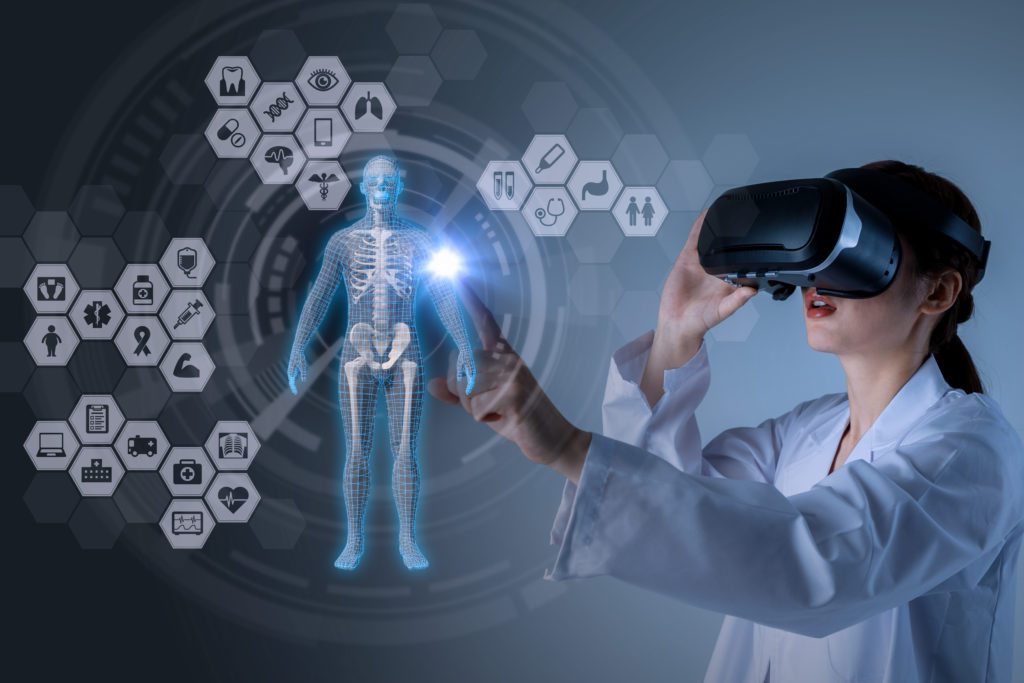Healthcare training is a crucial aspect of maintaining high standards in patient care and ensuring the competence of medical professionals. However, traditional methods of training often come with significant costs and limitations. In recent years, the integration of Virtual Reality (VR) technology has emerged as a promising solution to mitigate these
challenges. This article explores how VR can revolutionize healthcare training, leading to cost reductions and enhanced learning experiences.
As VR technology continues to evolve and become more accessible, its role in healthcare training is expected to expand rapidly. By embracing VR as a cost-effective and efficient training tool, healthcare organizations can empower their workforce, enhance patient care quality, and ultimately improve health outcomes for individuals and communities.
Introduction to Healthcare Training Costs
A. Understanding the Significance of Training in Healthcare
Training plays a pivotal role in the healthcare industry, ensuring that healthcare professionals possess the necessary skills and knowledge to deliver quality care. From medical procedures to patient interaction techniques, ongoing training is essential to maintain competence and stay abreast of advancements in the field.
B. Challenges Faced in Traditional Healthcare Training
Traditional methods of healthcare training often involve in-person workshops, lectures, and hands-on sessions. While these approaches are valuable, they come with several drawbacks, including high costs associated with venue rental, travel expenses, and instructor fees. Additionally, scheduling conflicts and limited access to resources can hinder the effectiveness of traditional training programs.
C. Introduction to Virtual Reality (VR) in Healthcare Training
Virtual Reality (VR) technology offers a transformative solution to the challenges of traditional healthcare training. By immersing users in realistic, interactive environments, VR simulations enable learners to practice procedures, make clinical decisions, and engage in realistic scenarios without the need for physical resources or direct patient interaction.
Benefits of Implementing VR in Healthcare Training
A. Cost Reduction in Training Programs
One of the most significant advantages of VR in healthcare training is cost reduction. By eliminating the need for physical resources such as medical equipment, facilities, and disposable supplies, VR simulations can significantly lower the overall cost of training programs. Moreover, VR enables organizations to conduct training sessions remotely, reducing travel expenses and logistical challenges.
B. Enhanced Learning Experience for Healthcare Professionals
VR offers a highly immersive and engaging learning experience that can enhance knowledge retention and skill acquisition. Through realistic simulations and interactive scenarios, healthcare professionals can practice complex procedures and decision-making in a safe, controlled environment. The hands-on nature of VR training fosters active learning and enables participants to learn at their own pace.
C. Simulation of Real-life Scenarios
VR simulations allow healthcare professionals to experience a wide range of clinical scenarios, including rare or high-risk situations that may not occur frequently in real-life settings. By exposing learners to diverse cases and challenges, VR training prepares them to handle unexpected situations with confidence and competence. This realistic training environment can improve clinical outcomes and patient safety.
D. Remote Training Opportunities
With the rise of telemedicine and remote work, the ability to conduct training sessions remotely has become increasingly valuable. VR technology enables healthcare organizations to deliver high-quality training programs to geographically dispersed participants without sacrificing the effectiveness of the learning experience. Remote VR training also facilitates collaboration among healthcare professionals from different locations, fostering knowledge-sharing and networking opportunities.
Implementation of VR in Various Healthcare Sectors
A. Hospitals and Clinical Settings
Hospitals and clinical settings can leverage VR technology to train staff members on a wide range of procedures, from surgical techniques to emergency response protocols. VR simulations provide an immersive learning environment where healthcare professionals can practice skills and scenarios relevant to their specific roles and specialties.
B. Medical Schools and Universities
Medical schools and universities are incorporating VR into their curricula to supplement traditional teaching methods and provide students with hands-on learning experiences. VR anatomy modules, surgical simulations, and patient interaction scenarios enhance student engagement and prepare future healthcare professionals for clinical practice.
C. Pharmaceutical and Biotech Companies
Pharmaceutical and biotech companies are using VR simulations to train employees on product development processes, regulatory compliance, and sales techniques. VR enables trainees to explore virtual laboratories, interact with molecular models, and participate in simulated clinical trials, accelerating the onboarding process and improving the retention of complex information.
D. Home Healthcare Providers
Home healthcare providers can utilize VR training modules to educate caregivers on patient care techniques, medication administration, and safety protocols. VR simulations allow caregivers to practice skills in a virtual home environment, preparing them to address the unique challenges of providing care outside of clinical settings.
Overcoming Challenges in VR Implementation
A. Initial Investment and Equipment Costs
One of the primary challenges of implementing VR in healthcare training is the initial investment required for equipment and software. High-quality VR systems can be costly, making it challenging for some organizations to afford the necessary technology. However, as VR technology becomes more accessible and affordable, the upfront costs are expected to decrease over time.
B. Technological Limitations and Compatibility Issues
VR technology is continually evolving, and organizations may encounter compatibility issues when integrating VR systems with existing infrastructure and software platforms. Additionally, technological limitations such as motion sickness and visual fatigue can affect the user experience and limit the effectiveness of VR training programs. Addressing these challenges requires ongoing innovation and collaboration between VR developers and healthcare stakeholders.
C. Resistance to Change among Healthcare Professionals
Resistance to change is a common barrier to adopting new technologies in healthcare settings. Some healthcare professionals may be hesitant to embrace VR training due to concerns about its effectiveness, relevance to their practice, or unfamiliarity with the technology. Overcoming resistance to change requires effective communication, training, and demonstration of the benefits of VR in improving clinical skills and patient outcomes.
D. Ensuring Regulatory Compliance and Data Security
In healthcare, regulatory compliance and data security are paramount concerns. Organizations implementing VR training programs must ensure that they comply with industry regulations and standards for patient privacy, data protection, and ethical use of technology. Implementing robust security measures and protocols is essential to safeguarding sensitive information and maintaining trust among patients and healthcare professionals.
Future Trends and Innovations in VR for Healthcare Training
A. Advancements in VR Technology
Ongoing advancements in VR technology are expected to enhance the realism, interactivity, and accessibility of healthcare training simulations. From haptic feedback systems to immersive 3D environments, emerging VR technologies will offer new opportunities for experiential learning and skill development in healthcare.
B. Integration of Artificial Intelligence (AI) for Personalized Training
The integration of Artificial Intelligence (AI) algorithms into VR training platforms will enable personalized learning experiences tailored to the needs and preferences of individual learners. AI-driven adaptive learning systems can analyze user performance data and provide targeted feedback and recommendations to optimize learning outcomes.
C. Expansion of VR Applications Beyond Training
Beyond traditional training applications, VR has the potential to revolutionize other aspects of healthcare, such as patient education, therapy, and rehabilitation. Virtual reality experiences can be used to educate patients about medical conditions, simulate therapy sessions, and facilitate motor skills rehabilitation safely and engagingly.
D. Potential Impact on Continuing Education in Healthcare
As the healthcare landscape evolves, continuous learning and professional development become increasingly important for healthcare professionals to stay current and competent in their practice. VR offers a flexible and scalable solution for delivering continuing education programs, enabling professionals to access interactive training modules and simulation-based assessments anytime, anywhere.
Conclusion
VR technology offers a promising solution to the challenges of traditional healthcare training, providing cost-effective, immersive, and engaging learning experiences for healthcare professionals across various sectors.
Successful implementation of VR in healthcare training requires collaboration between technology providers, healthcare organizations, educators, and regulatory bodies. By working together to overcome challenges and harness the full potential of VR, stakeholders can drive innovation and improve patient care outcomes.

